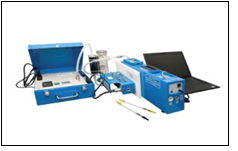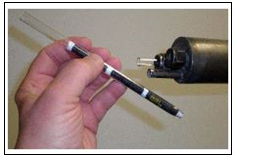
Stricter standards for coal fired units under the new Boiler MACT have increased the need for real time data when it comes to mercury emissions. Wilcox Environmental Engineering is collecting this data and reporting it in real time to clients across the country. We have several trained spectrophotometer analysts which specialize in onsite mercury analysis. In addition to providing real time data for performance tests, Wilcox also offers mercury RATA testing which requires onsite analysis.
Method 30B utilizes charcoal filled sorbent tubes to capture mercury in flue gas emissions from boilers and other coal burning sources. Two tubes are pulled as a part of each sample. One of the tubes contains a known spike (mercury added at the lab). The analyst measures the increased mercury in both tubes after the test and then calculates the spike recovery based on the comparison of the two tubes. Additionally, the tubes are partitioned such that there are two separate segments of charcoal within each tube. This allows for a calculation of the break-through of mercury passing through the sorbent tubes. These two calculations, along with a good leak check, guarantee the validity of the sample and sampling methodology.

It is also important to have some idea of the concentration of mercury in the stack prior to testing so that the right spike concentrations can be ordered clientuploads/Images/DB2.pngfrom the lab. It is the practice of Wilcox to bring multiple spike tube concentrations so that any concentration encountered can be appropriately measured. Estimating the mercury concentration ahead of time can be done through analysis of mercury in coal, comparison to mercury emission limits, previous test data and mercury CEMS (if installed).
Sources:
Ohio Lumex Website
http://www.ohiolumex.com/pages/trap_analysis.htm
ERA Boiler MACT Guide
http://www.era-environmental.com/en-US/pdf/guide-to-the-new-boiler-mact-regulations_era-environmental.pdf
